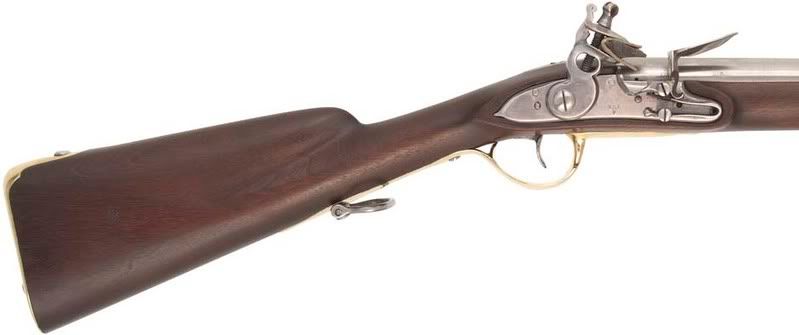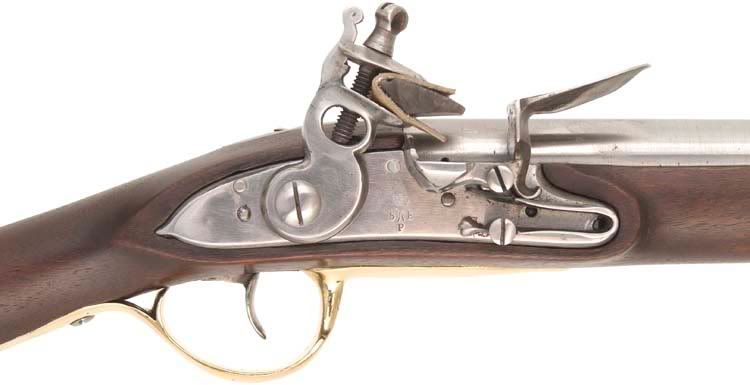Don't know why in the world I needed one of these, but when the flintlock bug bites, it bites hard!
This is a French 1763 cavalry carbine from maker John Bosh of Attleboro, Mass., who used castings provided in kit form by The Rifle Shoppe. John did a beautiful job of assembly, and added period correct St. Etianne arsenal markings on nearly every part, including the walnut stock.
The carbine is differentiated from the musketoon by the saddle ring bar on the left side and the brass center barrel bands (rather than iron) to resist corrosion from horse sweat. The ring was clipped to the cavalryman's harness and acted as a third hand in reloading, as well as in preventing the loss of the weapon.
There is a front sight post in German silver, but no rear sight.
The carbine was meant to be more effective than a pistol, but the saber or lance was still the principal weapon of the cavalryman, who fought mounted. The dragoon, on the other hand, rode to the battle field, but fought dismounted as infantry, generally using a full sized musket or rifle with bayonet.
The gun is rather small, with a 31" barrel and a weight of only 5 1/2 lbs. I have yet to fire it, but as it's .69 cal. smooth bore, it should be a brutal kicker with a full charge!





This is a French 1763 cavalry carbine from maker John Bosh of Attleboro, Mass., who used castings provided in kit form by The Rifle Shoppe. John did a beautiful job of assembly, and added period correct St. Etianne arsenal markings on nearly every part, including the walnut stock.
The carbine is differentiated from the musketoon by the saddle ring bar on the left side and the brass center barrel bands (rather than iron) to resist corrosion from horse sweat. The ring was clipped to the cavalryman's harness and acted as a third hand in reloading, as well as in preventing the loss of the weapon.
There is a front sight post in German silver, but no rear sight.
The carbine was meant to be more effective than a pistol, but the saber or lance was still the principal weapon of the cavalryman, who fought mounted. The dragoon, on the other hand, rode to the battle field, but fought dismounted as infantry, generally using a full sized musket or rifle with bayonet.
The gun is rather small, with a 31" barrel and a weight of only 5 1/2 lbs. I have yet to fire it, but as it's .69 cal. smooth bore, it should be a brutal kicker with a full charge!









